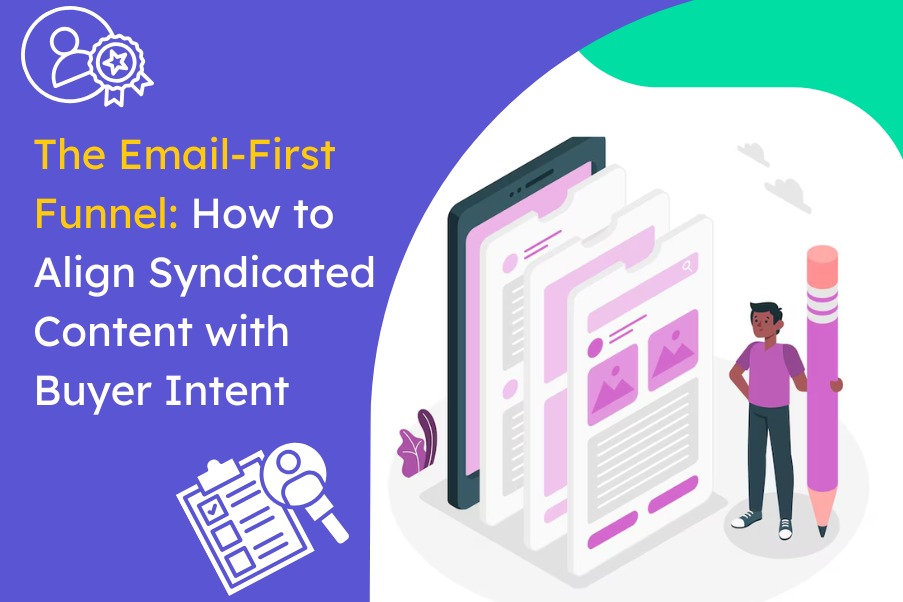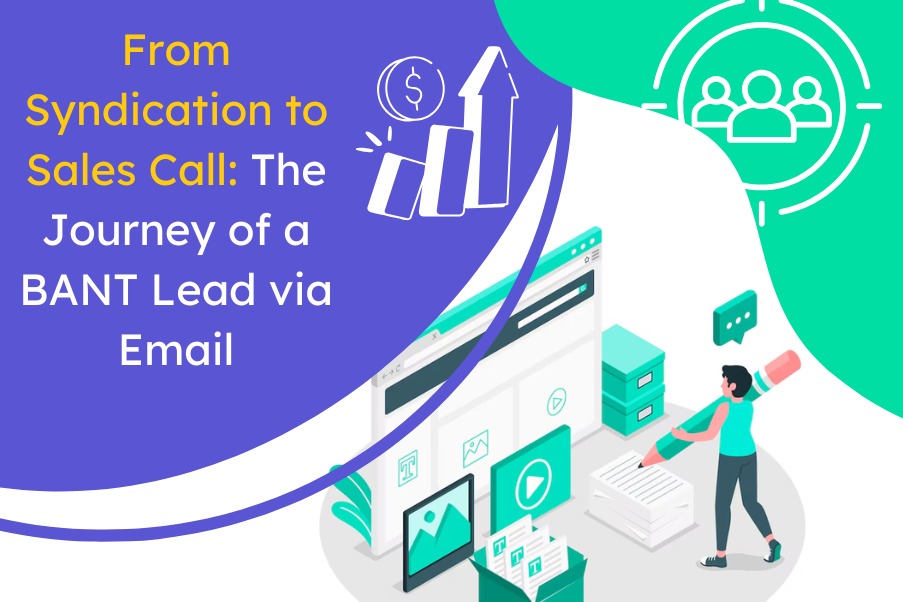The B2B Inbox Playbook: What Makes BANT Leads Click, Read, and Respond
Inbox Attention Spans Are Shrinking. So Why Are Your Emails Still So Long?
Every day, B2B buyers receive 100+ emails. Yet, despite that volume, fewer than 23% of sales emails even get opened. In most cases, emails never get a shot; they’re ignored or deleted without a glance.
When it comes to BANT-qualified leads, such as those with Budget, Authority, Need, and Timing, the margin is even tighter. These are decision-makers with clear goals and limited time. As a result, if an email doesn’t resonate quickly, it’s gone.
In response to this shift, the rules of B2B email marketing have changed. Now, clarity beats cleverness. Relevance wins over reach. And personalization gets more attention than a generic blast.
So, what does this mean for you? What truly makes these high-value leads click, read, and respond? Let’s begin!
The Silent Filter: How BANT Leads Judge Emails Before Opening
The Subject Line Is Your First (and Sometimes Last) Impression
To begin with, consider this stat: 33% of recipients open an email based on the subject line alone. For B2B email marketing, your subject line holds real weight.
- Don’t write: “Just checking in.”
- Do write: “Struggling to hire SDRs? Read this 3-minute fix.”
The second option speaks directly to a need and offers instant value.
Relevance Outranks Creativity Every Time
BANT leads aren’t browsing for fun. They want:
- Clear context
- Practical solutions
- No filler content
That’s why top-performing campaigns tie email engagement strategies to real pain points. For example, a CMO wants ROI, not catchy slogans.
Breaking Through with Personalization That Feels Real
Real Personalization Means More Than “Hi FirstName”
We’ve all seen it – “Hi FirstName, I noticed your company is doing amazing things!” That doesn’t qualify as content personalization. It reads like marketing fluff. Instead, use real-world context:
- Job changes on LinkedIn
- Funding announcements
- New hires or open roles
- Product updates
Then connect it to your value: “Saw you recently raised Series B. Many companies in that stage use our platform to scale hiring without adding admin costs.” Now it’s clear, relevant, and speaks directly to their growth phase.
Use Website Behavior to Drive Content
Leads browsing your site or downloading a guide leave signals. Segment those behaviors and send emails based on that data. This is how you improve lead interaction patterns and stay memorable.
Timing Is Not Everything. But It Still Matters
The “Tuesday at 10” Myth (and What Works Better)
You’ve probably heard it before: “Send emails on Tuesday at 10 a.m.”
In truth, what works depends on your audience’s habits. That’s where A/B testing helps you learn. PMG clients often see better engagement by focusing on:
- Post-event follow-ups
- Emails sent within 48 hours of site visits
- Messages after LinkedIn ad views
Follow-up Frequency That Doesn’t Feel Pushy
A good follow-up sequence respects your lead’s time and mindset. Think of it as a light conversation, not a sales chase. Structure it like this:
- Email 1: Start with a clear pain point
- Email 2 (Day 2): Include a stat or story
- Email 3 (Day 5): Ask about their internal process
- Email 4 (Day 10): Friendly close or opt-out
This kind of thoughtful follow-up is key to successful qualified lead email tactics.
Structure Emails to Be Read, Not Skimmed
Mobile-First Design Is a Must
Most B2B buyers, 62%, check emails on mobile devices. Long blocks of text are the quickest way to lose their attention. As such, try this:
- One thought per paragraph
- Short, simple sentences
- Bullet points
- White space for clarity
When emails are easy to read, they get more replies.
Visual Cues Guide Readers to Act
Formatting matters. Add bold headers, spacing, and minimal icons to guide the eye.
Try this example: “Teams cut onboarding time by 42 percent. Here’s how.”
In a recent PMG test, this outperformed a traditional subject line by 18 percent. This shows how much email engagement strategies rely on visual appeal, not just words.
Content That Answers Before They Ask
Lead With a Pain Point, Not a Pitch
Start by speaking their language. Skip the product spotlight and dive into their situation: “Hiring ops analysts while juggling vendor contracts? Most COOs I speak with say it’s a mess.”
As such, it builds a connection instantly. You’ve shown you understand their daily problems. After that, you can introduce your solution. This is the new standard in B2B email marketing.
Add Proof Without Overselling
Leads want results, not hype. So keep proof clear and grounded.
Try this: “We helped a logistics firm in Dallas cut reporting time by 35 percent. Happy to show you how.”
Short. Relevant. Results-driven. It supports your credibility and shows how you apply qualified lead email tactics.
The Metrics That Actually Matter
Open Rates Start the Story. Replies: Finish It.
High open rates feel great, but what happens next is what truly counts. So focus on:
- Reply rates above 10 percent
- Click-throughs to your strongest asset
- Response time to measure urgency
This is how you turn lead interaction patterns into meaningful insights.
Test the CTA, Not Just the Message
CTAs can drive or block the response. Avoid generic asks like “Let me know.” Use:
- “Want to see a 5-minute demo?”
- “Should I send over that client story?”
- “Think this might fit your team?”
Different CTAs lead to different results. Testing them is essential in B2B email marketing.
Why PMG Emails Convert More Often
PMG’s strength comes from more than writing. Our campaigns rely on:
- Persona-driven targeting
- Real-time behavior tracking
- Message testing
- Lead scoring based on engagement
Clients working with PMG have seen a 38 percent increase in qualified replies within 90 days, driven by strong content personalization and optimized email flows.
Beyond that, our strategies work across SaaS, finance, healthcare, and more. If you want B2B email marketing that creates real conversations, start here: PMG Blog.
Aligning Sales and Marketing Around the Inbox
When Sales and Marketing Speak the Same Language
Often, the reason B2B email marketing doesn’t land is not because of poor copy. It’s because sales and marketing aren’t aligned. While marketing is focused on driving interest, sales is chasing deals, and the disconnect shows up in the inbox.
As a result, leads receive emails that miss the mark. The tone feels off. The message sounds generic. So they click away.
To fix this, both teams need to work together. When sales and B2B email marketing align, emails become more relevant. Messaging sharpens. Objections get addressed early. And every campaign supports a shared strategy built on qualified lead email tactics.
Use Sales Feedback to Sharpen Email Sequences
So, how do you close the gap?
Start with the data sales teams already have. They know what leads care about, which questions stall conversations, and what motivates people to respond. By sharing those insights, your email engagement strategies get stronger.
For example, you can run weekly syncs to look at what’s working:
- Which subject lines drove opens?
- What CTAs led to replies?
- Where are prospects dropping off?
This feedback loop helps you track lead interaction patterns more effectively. It also makes it easier to adjust tone, offers, and follow-up timing in real time.
Shared Metrics, Shared Wins
Finally, aligning goals helps everything run smoother. When both teams track metrics like reply rates, meeting conversions, and pipeline value, results improve faster.
Now your emails aren’t just content. They’re a system that fuels growth.
By combining content personalization with tested messaging and real sales insights, your B2B email marketing turns into a real advantage. It’s no longer one team handing off to another, it’s a joint effort that keeps the conversation going across every touchpoint.
Final Thoughts: Write Emails That Start Conversations
In the end, BANT leads don’t want long speeches or over-polished sales language. They want honest value.
So, speak like a person. Address their real needs. Share helpful content. And follow up with a purpose.
Emails should do one thing well: start a real conversation.
At PMG, we help B2B brands craft B2B email marketing campaigns that do exactly that. Our team blends strategy, personalization, and proven tactics to turn inboxes into pipelines. Ready to build conversations that convert? Explore more at PMG.




